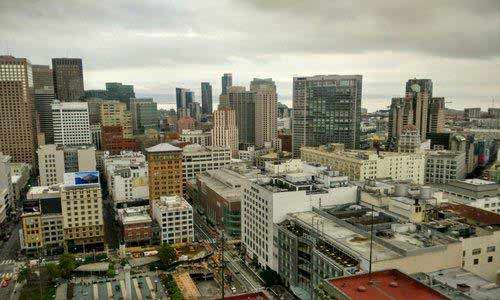We introduce you to the capital and the 2nd most populous city of Minnesota. Hemmed in the eastern bank of the Mississippi River, Saint Paul is the most livable city in America. It offers an array of top attractions that draw millions of visitors every. Anyone who has been here has some interesting story to share about what to do, see and taste in this unique and inspiring city. Arriving here you will be delighted to sense the city's relaxing vibe and blast of welcoming old world charm, with full of new energy. From Minneapolis Institute of Art to Frederick R. Weisman Art Museum to the winter fiestas like the Saint Paul Winter Carnival to Minnesota Zoo - St. Paul promises you memories to cherish forever. Saint Paul retains a well preserved historic character that is reflected in its various neighborhoods. The city also is quite popular among athletic travelers who enjoy jogging, boating and the number of professional games it host. Pack your bag, for this is your chance to create your own Saint Paul story.
 Image by Multiple via Wikimedia Commons
Image by Multiple via Wikimedia CommonsHistory of Saint Paul
Historical surveys suggested that Saint Paul was inhabited by the Hopewell Native Americans about 2000. A tribe of the Sioux, the Mdewakanton Dakota lived near the mounds from the early 17th century until 1837. In 1819, Fort Snelling was constructed on the territory at the meeting point of the Mississippi and Minnesota Rivers. In the beginning of 1840s, the areas surrounding the fort, became important as a trading hub and locals fondly named it as Pig's Eye or Pig's Eye Landing, which was named from Parrant's popular tavern.
In 1849, the Minnesota Territory was formalized and Saint Paul was designated as its capital. Minnesota became the 32nd state of the Union in 1858, with Saint Paul as the capital. Owing to its geographical features, the city became a landing or a gateway for settlers. The 1990s and 2000s in Saint Paul has brought in many immigrants from around the globe. A recent study has shown Hmong immigrants from Vietnam, Cambodia, Laos, Myanmar and Thailand as the city's noteworthy immigrant groups.
Important Locations in St. Paul
Saint Paul is divided into seventeen Planning Districts. On part of the city's west, southeast and southwest regions, the Mississippi River is a municipal boundary. Saint Paul is reputed for its neighborhoods and hence known as "fifteen small towns with one mayor". Downtown Saint Paul is home to some of the city's tall buildings and significant landmarks, like Galtier Plaza, Xcel Energy Center, the McNally Smith College of Music, Wells Fargo Place and the Minnesota Swarm. Downtown also holds many parks, a special mention is Rice Park. While Union Park is a residential neighborhood that features heaps of early 20th-century housing.
Listed below are some of the city’s top tourist attractions.
Como Park Zoo & Conservator: The top attractions here include - a zoo, a small amusement park, conservatory, concert pavilion, paddleboats, an outdoor pool and 18-hole golf course.
Click here to explore more.
Science Museum of Minnesota: Science Museum of Minnesota is blend of science and history is exhibited so perfectly and this place will also totally engage your children.
To know more, Click Here.
Minnesota Zoo: The zoo is home to wide range of diverse wildlife, from reptiles to birds and bats, to animals like tigers, moose, camels, lynx and more.
Read more for more details.
Cathedral of St. Paul: The cathedral is designed after Rome's St. Peter's Basilica and is the town's architectural masterpeice.
Learn more about the Cathedral here.
Rice Park: The park is one of the city's top attractions and it is surrounded by many notable architectural landmarks.
Explore more about Rice Park.
Find out the best tourist spots in St Paul!
People and Culture of Saint Paul
The people of Minnesota are well known of their courteous, mild-mannered nature and thus fondly used the phrase "Minnesota Nice" to describe them. In the bygone days, the city was an agricultural hub. Today, the city has brought in a rich art culture, with an array of fine art museums and several top performance centers scattered throughout. The Twin Cities are also coined as the Midwestern mecca for foodies. You’ll also come across a large college student population in Saint Paul as well as Minneapolis.
Time Zone and Phone Codes in Saint Paul
Saint Paul is in the Central Time Zone (UTC-6). The Summer Daylight Saving Time (DST) is Pacific Daylight Time (UTC−5).
Standard time zone: UTC/GMT -6 hours
Daylight saving time: 1 hour
Current time zone offset: UTC/GMT -5 hour
Time zone abbreviation: CST
Phone Codes of St Paul
Saint Paul area codes: 651
International Country Code: 1
Best Time to Visit St Paul
The best time to plan a trip to St. Paul is from June to August. With temperatures hovering around 80s, during this time of the year you take your adventure outdoors and onto the lakes. The city hosts many festivals during summer and thus is the high season, attracting many tourists. Winters in St. Paul can be freezing, with lots of snowfall.
Some of the notable seasonal festivals and events celebrated in St. Paul
Food & Wine Experience (March)
Soundset Festival (May)
Art in Bloom (April)
Grand Old Day (June)
Rock the Garden (June)
Twin Cities Pride (June)
Basilica Block Party (July)
Minneapolis Aquatennial (July)
Uptown Art Fair (August)
Minnesota State Fair (August-September)
Medtronic Twin Cities Marathon (October)
Zombie Pub Crawl (October)
Holidazzle (December)
Saint Paul Winter Carnival (January-February)
Plan a holiday to St Paul!
Map Guide of Important Locations in St. Paul